
views
Making a Plan

Know your goal. The goal of "earning money" is too vague. You'll need to decide on a set amount of money you'll want to make before attempting to flip your initial $200 investment. Vague goals are difficult to plan around. By setting a definite goal, you can work the numbers and plan accordingly. You may or may not reach your final goal, but your odds are probably better than if you go about it haphazardly. Make sure your goal is realistic. For instance, it wouldn't be very realistic to say that you want to flip $200 into $20,000. Depending on the amount of time you want to spend, though, it might be feasible to make as much as $2,000 from an initial investment of $200. If you only have a short period of time, a smaller goal, like $400, would be even more appropriate.
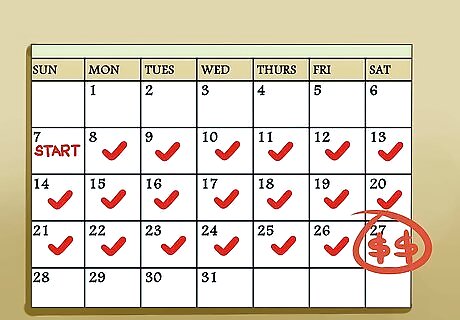
Give yourself a time limit. Time limits are another key element of successful plans. Setting a time limit will keep you more focused, allowing you to create a more structured plan. The time frame you set should be influenced by the amount of money you want to earn, and vice versa. It will be easier to earn more money over a longer period of time. You should probably give yourself at least one month if you want to flip $200 into $2,000. On the other hand, if you only need to make $400, you might be able to manage that within one or two weeks. If your time frame is already set by some external deadline, you may need to adjust your funding goal to match it. When neither option can be adjusted, you may need to consider investing more than $200 toward your project.

Consider your options. While there are limits on what you flip with $200, you do have a few different options to consider. Research each option and determine which ones you think you'll have the most success with. If you have the abilities for it, you can spend money making artwork, jewelry, food, or other small goods. Those goods can also be sold online or in person. Certain skills are also marketable. For instance, if you are able to fix computers, walk dogs, or perform other services that are in demand, you might be able to make a quick profit by advertising those skills to people in your neighborhood. Use the $200 (or less) for advertising.

Split your funds. If you decide to embark on more than one venture, you'll need to decide how much money you can afford to spend on each part of the process before you actually begin. If you start spending without a plan, you'll probably realize that $200 can be depleted very quickly, and you may not have enough money to actually complete later parts of your project. As a general rule, you will need to set a budget that includes three different elements: the amount of money you spend on goods, the amount of money you spend on advertising, and the amount of money you spend on related fees. Fees are usually fixed amounts, so you should figure those out first. For instance, some online market websites may charge fees for every item you list. Visit each website you plan to sell through and find out if there are any fees associated with the service. Once you determine what fees you can expect to pay, you can figure out how to use the rest of your $200 investment. Advertising at this level will usually cost very little. If you plan to sell at garage sales and similar events, though, you should set aside a small amount of money to print fliers and similar promotional materials. For example, you might realize that you'll be spending $10 for listing fees on various websites, leaving you with another $190. Of that remaining amount, you may choose to spend another $10 printing and distributing fliers. That leaves you with $180 to spend on your investments.
Spending the $200

Shop around for good junk. Try to find cheap, unwanted items that other people no longer want. You may need to make a few repairs before you can sell the items to others, but the costs could still be worth it. Try going to estate sales, flea markets, and secondhand stores. If you think you won't be able to sell an item for more than you'll need to pay for it, pass it up. Any item you think you can sell for a higher price might be worth picking up, though. Ask people you know if they have any junk they're willing to part with. They may give it to you for free or for a low price. Look on the curb during garbage day, too. Most of the stuff being thrown out will need some repairs, but if you feel confident in your ability to adequately repair it, become a fix-it person and earn some money off of your trade.

Sort through your own junk. Sort through those old boxes stored in your closets, attic, and basement for goods you no longer want or need. Items that are in good shape might be worth selling. In most cases, you'll likely find small items like books, CDs, and DVDs. Most of these items won't bring much profit, but as long as you can sell them for a few dollars, they're still worth spending time on. Collectibles and large items can be sold for greater amounts of money, of course. This may include old electronics, like DVD players and televisions, or other costly non-electronic goods, like baby strollers or furniture.

Make minor repairs to potential sale items. Don't discard a potential sale item if you have the ability to repair it, but conversely, don't spend an excessive amount of money getting something repaired, either. Minor repairs include any repair you can make by yourself with the use of only a few cheap supplies. For instance, adding a new coat of paint or wood stain might be considered a minor repair. Major repairs include any repair you'll have to pay to complete or any repair that involves the use of expensive replacement parts. Such repairs might be worth the effort if you plan to flip a larger amount of money, but when you only have $200 to work with, it's best to avoid them.
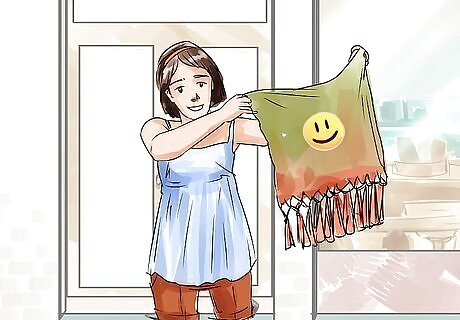
Create your own products. If you possess some level of skill as an artisan, consider making your own small wares by hand. Include the cost of materials as part of your $200 investment. Your skills should be at a semi-professional level. You don't need to be an expert, but you need to be better than a beginner. As a general rule of thumb, ask yourself if you would purchase something made by someone of your skill level. If the answer is “yes,” then this option might be worth pursuing. When designing products and purchasing materials, keep the price of those materials in mind. You may have more success purchasing cost-effective materials in bulk and producing small pieces than you will if you invest all of your money in expensive materials needed to create one work of art.

Advertise your skills. You might be able to make money by offering to perform some small, marketable skill for a certain price. You will need to advertise your services, however, which will cost some of your initial $200 investment. Get creative, but choose a practical skill. For instance, offer your skills as a tutor in subjects that you excel in, or offer music lessons for an instrument you play well. If you feel most comfortable doing physical labor, you could offer to paint homes, mow lawns, or shovel snow. Be up front about the amount of money you plan to charge for your labor. Do a little research beforehand to determine how much money other people make doing the same service, then set a comparable wage for your own efforts.

Build an online business. If you have the proper knowledge, you can start making money online quickly and easily. For example, if you can build websites, offer search engine optimization (SEO) services, or invest in domain names, you can make much more than your initial $200 investment. New websites are popping up every day and the owners of those websites are looking for SEO services. Familiarize yourself with SEO tactics and offer your services at a competitive price. One of the best ways to advertise your business is to prove your SEO capabilities by starting your own website and producing content that ranks for specific keywords. That will cost you well under $200, give you exposure, and prove that you know what you're doing. You can also profit if you buy a domain name that isn't in high demand, but might be one day. Once somebody with deep pockets is interested in that domain name, you could stand to make a tidy profit by selling it. Imagine if you had bought the domain name "cheap-laptops.com" a long time ago for just a few dollars. How much do you think it would be worth today? Keep in mind that you can't purchase a domain name based on a registered trademark and hope to profit from it by selling it to the trademark owner. That's a violation of federal law. Pick a generic, non-trademarked name.
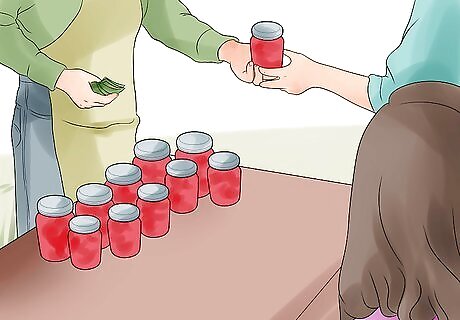
Sell something that is in high demand at a specific time. If it's hot outside, why not pick up some bottled water on the cheap at your local grocery store and sell it at a nearby park for a significant markup? You might need a permit and/or some permission to do so, but take care of that ahead of time. You'll also need a cooler to keep the water cold, but those usually cost much less than $200.
Earning the Money
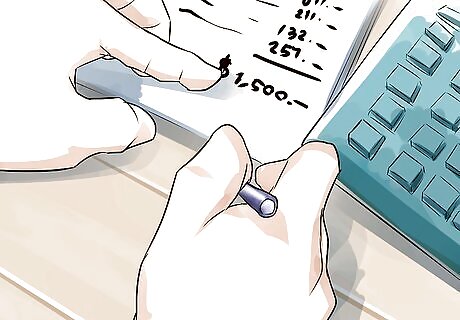
Price to make a profit. No matter what you sell and where you sell it, you need to make sure that the price you sell it for will make the endeavor worthwhile. This is when you'll really need to get serious about doing the math. You'll need to take into consideration the market value of what you're trying to sell, the amount of money you spent on each item, and the total amount of money you want to earn. The first thing you'll need to do is analysis of the competition. How much are other vendors asking for similar items? Your price will need to be comparable to the standard price, or market value, of that item. You'll also need to figure out how much money you need to charge in order to make the type of profit you want. For flipping something as small as $200, you could probably get away with simply pricing each item at a cost that's equivalent in value to the profit rate you want to see. For instance, if you want to earn a total of $400 (which would mean a $200 profit), the average price you sell your items for should be double the price you paid for them. When considering the price you paid, you should factor in the cost of the item, the cost of repairs, the cost of listing fees, and the cost of advertisements.

Sell goods online. Nowadays, there are many different websites you can sell products through. The right website will depend on the type of items you wish to sell. If you have more than one type of item, don't be afraid to sell through different websites, too. Just make sure that you don't accidentally list one specific item on multiple websites. Craigslist is one good option, especially for big items that would otherwise cost a lot to ship. Used books, CDs, and movies can be sold on Amazon or eBay's Half.com. Crafting supplies and handmade goods can be sold on Etsy, and just about anything else can be sold on eBay. eBay and Etsy are relatively safe platforms. However, others, like Craigslist, don't have an organized method of getting you out of fraudulent sales. Never send your items to buyers without receiving payment first. If you have to meet the buyer in person, do so in a public place within sight of security cameras or large groups of people.
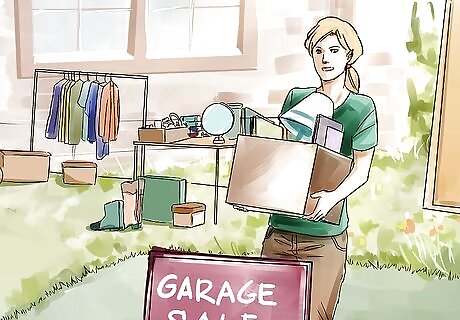
Hold a garage sale or yard sale. If the weather is nice and you've collected a large number of potential sale items, consider setting up shop in your driveway or front yard. Run your sale for at least three to four days, making sure that Friday, Saturday, and Sunday are included in your dates. These are the days when most people will be out and about, so they're typically the days when most people will stop by to see what you have for sale. If you choose to run a garage sale and sell online, do not list any garage sale items online until after your garage sale is finished. Selling one item through multiple venues is generally a bad idea. Make sure that you advertise your garage sale adequately well. You'll need to post fliers that direct people to your home. These fliers should extend from your home to the nearest main street or highly populated road. Consider posting additional fliers on community bulletin boards, too. Garage sales are regulated in some municipalities. Make sure you have all of the proper permits before holding one.

Attend larger market events. Check around for large-scale market events in your area that you can join. There will likely be some fee you'll need to pay to set up a table there, but you won't need to worry about advertising fees. Consider setting up a table at a large community flea market or swap meet. If you have handmade goods, you might want to set up a table at a craft show, as well. All of these options draw in large crowds of people interested in purchasing inexpensive goods. Other options include pawn shops and consignment shops. You can sell nearly anything to these shops, but items that can be sold for a higher profit, like jewelry, furniture, and clothing, will typically work better than small knickknacks, crafts, books, or electronics.

Follow through on freelance jobs. If you decided to sell some skill, service, or form of labor, you need to follow through on any leads you get and take the offers that seem reasonable. Make sure that an agreement regarding payment is reached and decided upon in writing before you actually start working. Also, look for freelance “Help Wanted” ads posted online or in print. Check local newspapers, community bulletin boards, Craigslist, and other similar resources.


















Comments
0 comment